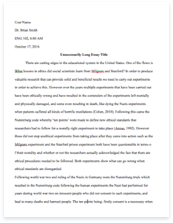Tim Burton’s “Edward Scissorhands”

A limited time offer! Get a custom sample essay written according to your requirements urgent 3h delivery guaranteed
Order NowMany people have enjoyed and laughed at the strange tale of Tim Burton’s “Edward Scissorhands” but beneath this comedy underlies many more themes and genres which portray the average stereotyped suburban community and . The movie shows the audience how the lives of typical suburban housewives get disturbed by the appearance of someone different. The use of various film techniques allow the audience to see who dominates this social hierarchy of housewives, and ultimately differs the good from the bad.
Tim Burton’s unique creative mind has allowed two or more genres to fuse and form “Edward Scissorhands” The traditional features of the gothic genre is shown to a certain extent for example, in the opening scenes the audience sees a gloomy mysterious castle that is surrounded by an atmosphere of mystery and suspense as it is black, foggy and snow falls. This begins to reveal the underlying theme through out the movie. When the audience is shown Edward’s house through the eyes of Avon, an innocent sales representative of a makeup clinic, they see a castle like mansion, with fascinating colourful sculptured hedges. Yet, once inside the house, the audience sees a contrast as it is dark and tranquil. One can assume that Burton is showing the audience how different the outside world is in comparison to Edward’s life.
When the audience meets Edward for the first time, he emerges from a dark corner of an empty room, with a ghostly white face in which Avon wastes no time in pampering with her makeup products. Edward is dressed in such a way that reminds the audience of the gothic presences such as a hard black material encaging his upper body, and wild black hair. As Avon stares in shock at Edward’s scissor hands, one would presume the audience would to as they would closely examine Edward’s distinctive features. In this scene Burton has been successful in capturing the audience’s attention, and emphasises the difference of Edward and modern day life by contrasting a beautiful and colourful environment to a dark and dull house.
The title “Edward Scissorhands” implies Edward has hands that made be harmful or dangerous. But this is not the case, as the person with the real “Scissorhands” is Joyce. Joyce’s hands are often emphasised in close up shots. Her hands are scrawly and sharp, especially her nails, which are long and curved, almost as dangerous as Edward’s Scissors. This makes the impression that Joyce is evil and treacherous and her hands can be compared to a stereotypical witch’s hands.
When discovering Edward’s talent, the audience sees a scene in which all the housewives bring along their dogs for a grooming by Edward. But we soon see Joyce take advantage of this, and instead allow Edward to cut her hair rather than groom her pup. When filming Edward cut Joyce’s hair we see an under shot where the camera is positioned on an angle below Joyce, and shows Edward as a “God” as he is significantly taller that Joyce, and is positioned to fit well into the light blue sky background.
The idea of social satire is clearly portrayed in the movie “Edward Scissorhands” The purpose of the satire in the movie is to reveal the human flaws in a society, and to show the attitudes and behaviours of one another. For example, the scene where Edward faces the police after he tries to rob a house shows the flaws of the human society. As Edward leaves the house, and is greeted with bright flashing red lights, it shows five or more policemen with hand guns pointed at him. Edward is in a state of shock and confusion as he blocks out the world and just walks forward. As he does this, the police begin to become agitated and start yelling out words in an insularity manner. The policeman with the microphone is only thinking one way, and that is to bring this “psycho” down.
Some Points:
Burton pokes fun at middle-class suburbia living, middle -class values, small-town hypocrisy, small-mindedness, gossiping and backbiting. Burton has so many ideas in one movie that he never really grabs us when we have so many distracting peripheral issues to contend with.
The climax, involving Kim’s jealous, cloddish boyfriend, Jim (Anthony Michael Hall), is violent and jarring and wreaks havoc with the gentle comedic tone of just about everything that went before.
The bad people: Joyce (Kathy Baker), the hot-to-trot housewife who attempts to seduce the innocent Edward; and Jim (Anthony Michael Hall), boyfriend to Peg’s daughter Kim (Winona Ryder: Alien Resurrection, Celebrity), who’s jealous of the longing looks Edward throws Kim’s way. When they finally turn on Edward, it’s only the beginning of a concerted attack by the neighborhood on Edward’s art, his presence in their lives, and his very existence.
Edward Scissorhands also exposes the fear of people to new cultures, races, social groups and the isolated people simple because they are different to ‘normal’ people. For example in one scene where Edward eats with the family, the whole family is staring, or just feeling awkward. They are acting like that not just because he is a stranger who is eating with them, but he is so different to the family -especially his hands.
In Edward Scissorhands, the neighbourhood does not really accept Edward Scissorhands to them because of his differences. It seems that the neighbourhood accepted him when Joyce started liking Edward and he was a part of the neighbourhood with his sculptures. But when he gets caught for helping Jim attempt to steal Jim’s Dad’s stereo equipment, he has a ruined reputation and the gap between him and the neighbourhood gets bigger and bigger until he is not accepted anymore. That is when he is a wanted man.










